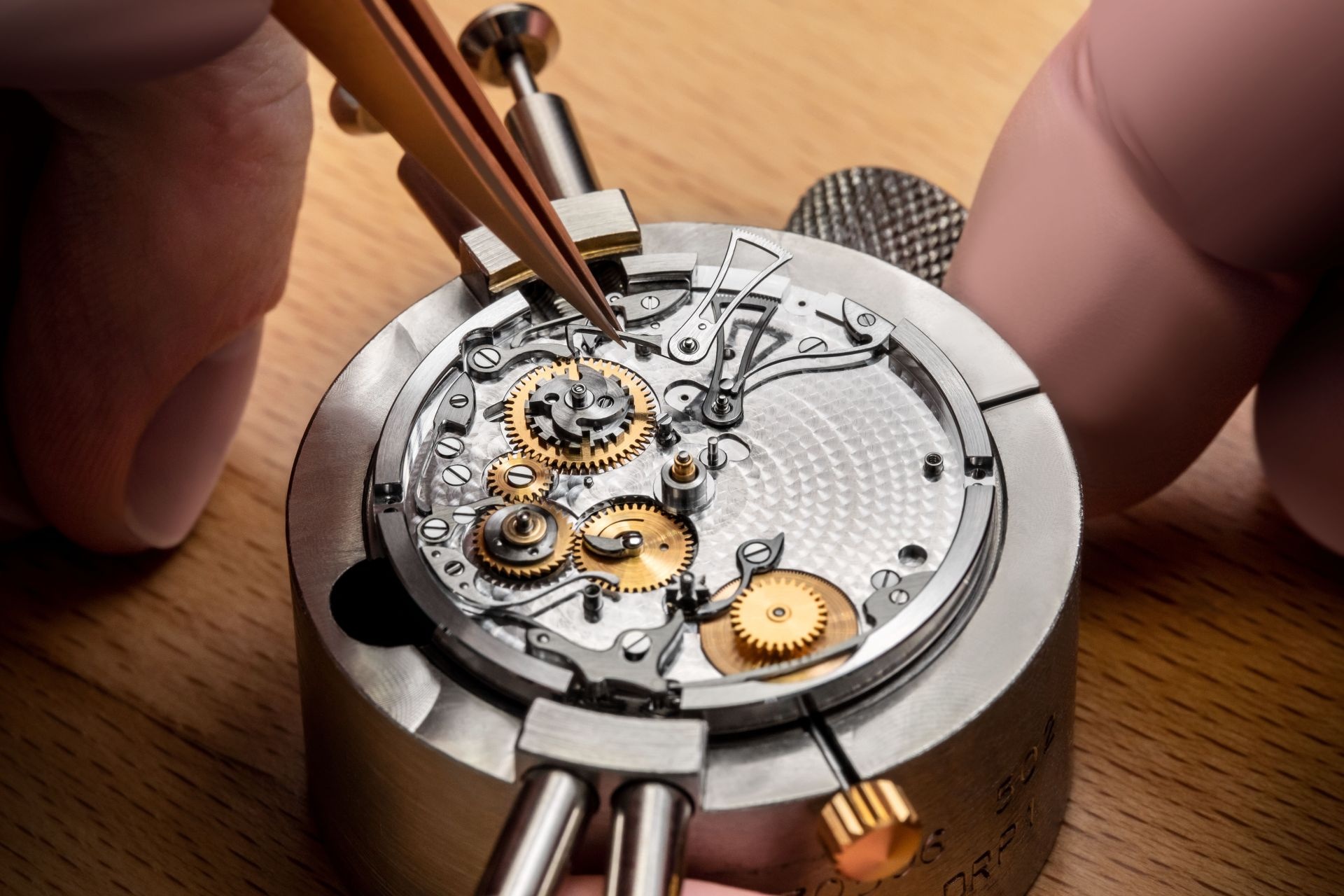Breguet Classique Quantième Perpétuel 7327
In the 1780s, Abraham-Louis Breguet enjoyed great success with his so-called perpétuelle watches equipped with an à secousses (moving) oscillating weight enabling the calibre to react to the wearer's body movements and thus automatically wind the mechanism as they walked. These watches often incorporated a calendar mechanism and it was also on these models that Breguet experimented with his first guilloché silvered dials.
In 2023, Breguet pays tribute to it within its Classique collection through a reinterpretation of the perpetual calendar in two gold colours.
The new Quantième Perpétuel 7327 by Breguet reflects the very essence of the brand: a timepiece that is simple to use for its wearer yet complex in its realisation. This fascinating watchmaking function born in the 18th century displays the exact date, taking into account the variable length of the months and the leap-year cycle. To accomplish this feat, the movement must have a four-year mechanical "memory" corresponding to 1,461 days.
The mechanism is based on a gearing system from the hour’s wheel and a large central lever that drives the entire movement on a daily basis. For this reason, no less than 294 components are required to bring this model to life. One of Breguet's key objectives was to offer a light and comfortable timepiece and the Manufacture has thus opted for Calibre 502 with an additional calendar mechanism.
At just 4.5 mm thick, the 502.3.P movement remains one of Breguet's thinnest. It is designed to provide a high level of performance despite its thinness. Its barrel is open, contributing to its slenderness while guaranteeing constant, powerful energy. Its gold oscillating weight is off-centred to provide maximum space for the movement's main components, enabling it to be integrated to a minimum thickness.
This self-winding movement is rhodium-plated, beats at a frequency of 3 Hertz and has a 45-hour power reserve. It is equipped with a flat silicon balance-spring and an inverted straight-line escapement with silicon horns. Silicon has many properties, in addition to being resistant to corrosion and wear, it is insensitive to the influence of magnetic fields and improves the watch’s precision.
Its movement, which can be admired through the sapphire case back, highlights a skill dear to Breguet: decoration. The gold oscillating weight is hand-engraved on a rose engine with a circular barleycorn motif, the bridges are adorned with Côtes de Genève, and the other components are finished with chamfered edges and likewise with Côtes de Genève. This highly precise craftsmanship is performed by the artisans in the Manufacture located in the heart of the Vallée de Joux.
A timepiece with an understated design
As fascinating on the movement side as on the dial, the new creation by Breguet features a timeless aesthetic, recalling the brand's distinctive features in a contemporary spirit. The dial is adorned with a Clous de Paris hobnail pattern. Located between 1 and 2 o’clock, the moon phase has been designed to provide a strong sense of realism, notably thanks to its hand-hammered surface. Its sky is coated with a blue lacquer composed of spangles subtly revealing the stars depending on how the timepiece is turned.
The day, date and year indicators are harmoniously entwined at the base of the dial. A quarter-circle bewteen 10 and 11 o’clock indicates the months via a retrograde hand. The hours and minutes are indicated by the traditional eccentric “moon” tip watch hands in blued steel. The secret Breguet signature, created by the founder in 1795, appears between 11 and 12 o'clock as well as between 12 and 1 o'clock.
Finally, adjustments of the various dial indications are completed from several positions on the 39 mm case. A corrector stylus serves to adjust the day at 4 o'clock; the different moon phases between 4 and 5 o'clock, the date at 6 o'clock and finally the month and the year at 9 o'clock. The time is set via the crown located at 3 o'clock.
The Classique collection
Both functional and emblematic, the Classique collection faithfully illustrates the aesthetic codes dating back to the brand's origins. In addition to his talent as a watchmaker and inventor, Abraham-Louis Breguet was also one of the first designers well before the term was coined. When the company was founded in Paris in 1775, the baroque style was in vogue. He invented and introduced the neoclassical style to watchmaking.
This aesthetic vision gave the dials an avant-garde look while making it easier to read the indications. He created the eccentric “moon” tip watch hands, the guilloché pattern and the off-centre dial, to name but a few. The latter design was used on pocket watches from 1812 onwards and established the brand's DNA. Inspired by these creations, the 5327 Quantième Perpétuel joined the line-up in 2004. Its 2023 version is a contemporary embodiment while remaining faithful to the powerful signatures of the Classique line.
Available in 18K white or rose gold, this new timepiece is paired with a midnight blue strap for the white gold model and a mysterious brown strap for the rose gold version.
Technical specifications
Breguet Classique Quantième Perpétuel 7327
Reference: 7327BB/11/9VU (white gold)
Reference: 7327BR/11/9VU (rose gold)
Case
- Material: 18-carat white or rose gold
- Diameter: 39 mm
- Thickness: 9.13 mm
- Glass: Sapphire crystal
- Sapphire crystal case-back
- Water-resistant to 3 bar (30 m)
Dial
- Silvered gold dial, hand-engraved on a rose engine
- Blued steel hands
Movement
- Calibre: 502.3.P
- Self-winding, platinum oscillating weight
- Frequency: 21'600 vph (3 Hz)
- Number of jewels: 35
- Number of parts: 294
- Power reserve: 45 hours
- Escapement: inverted straight-line lever with silicon horns, flat balance-spring in silicon
Functions/Indications
- Hours, minutes
- Perpetual calendar (day, date, retrograde month, leap year)
- Moon phases
Strap and buckle
- Blue or brown alligator leather with folding clasp
MSRP: EUR 86'000
For more information, please visit breguet.com












Comments
Leave a comment